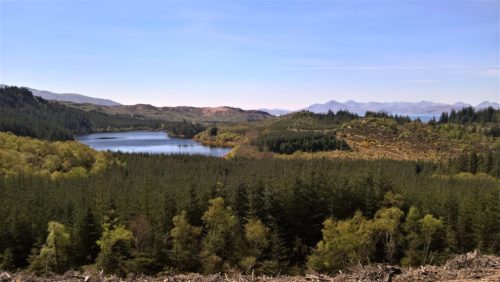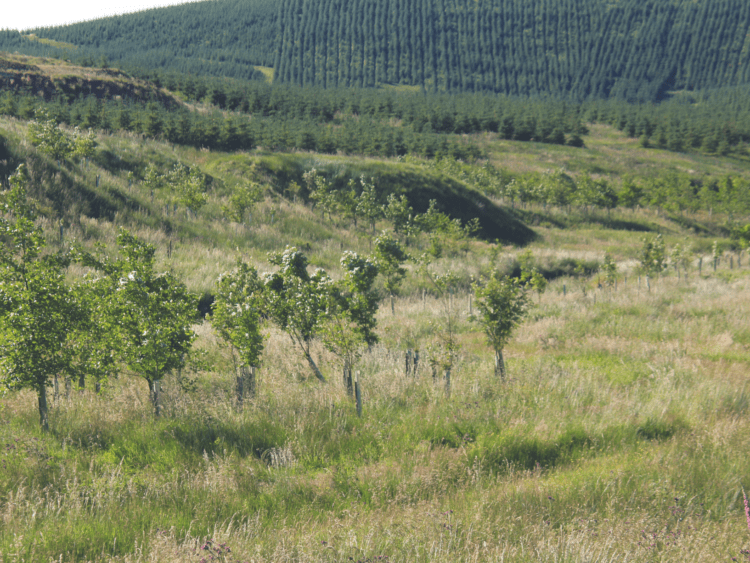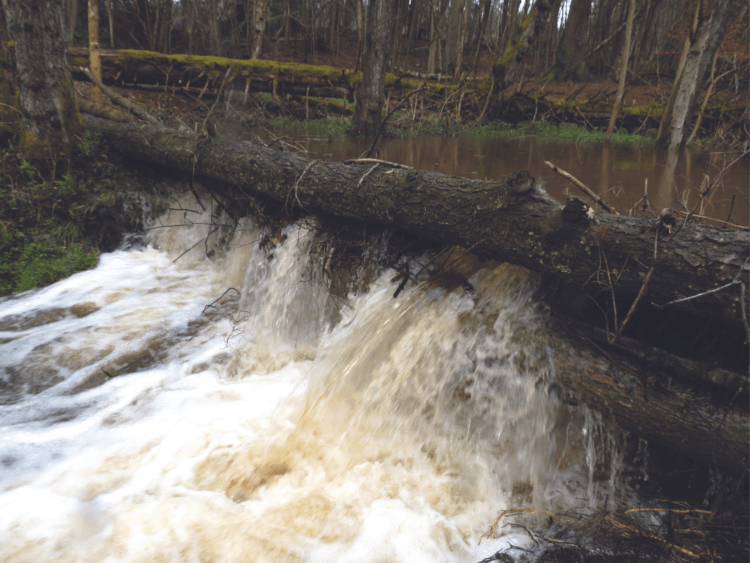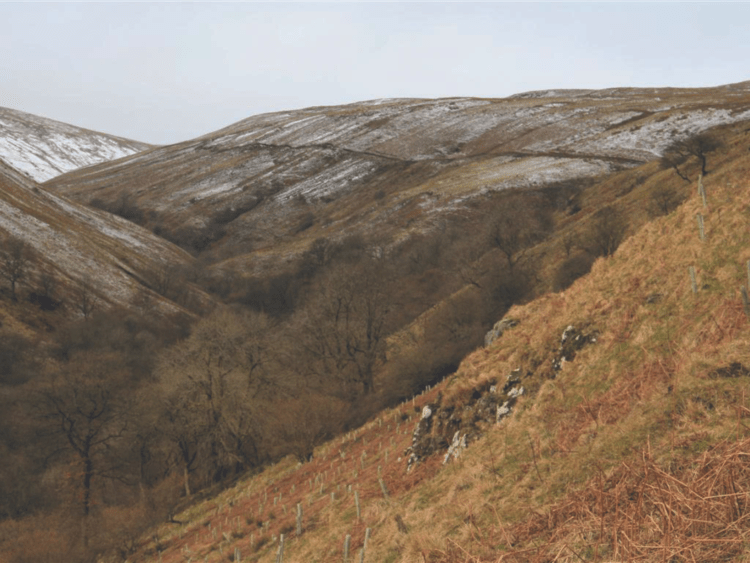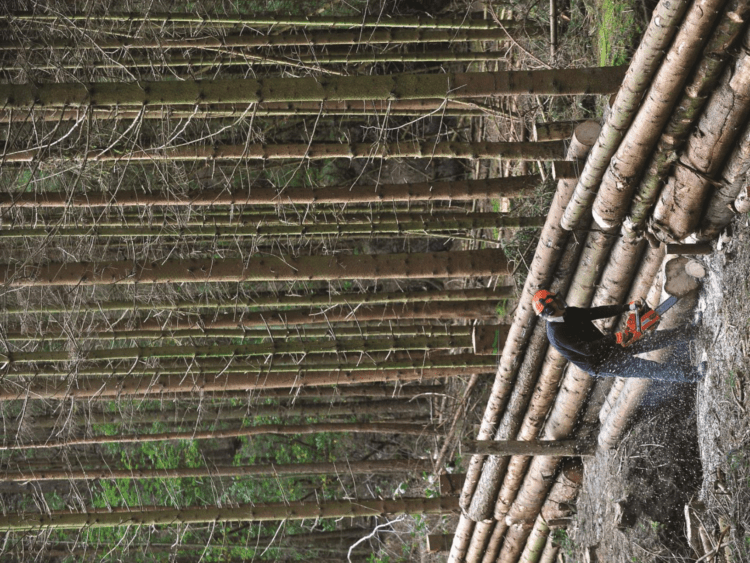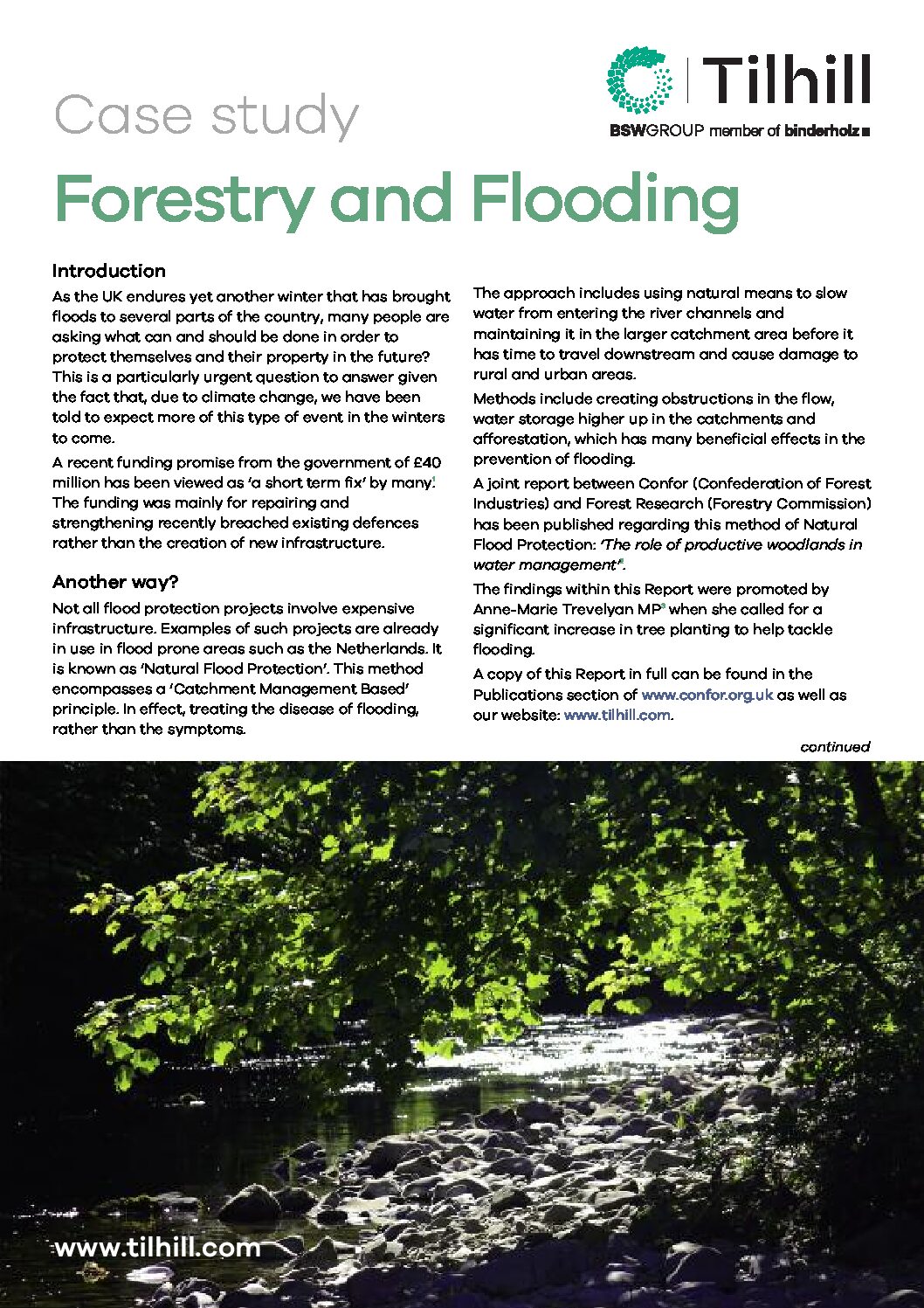This project helped to:

Create financial input into a rural economy

Improve biodiversity in the area

Aid in carbon sequestration
Using natural means to slow water
This is a particularly urgent question to answer given the fact that, due to climate change, we have been told to expect more of this type of event in the winters to come. A recent funding promise from the government of £40 million has been viewed as ‘a short term fix’ by many.
The funding was mainly for repairing and strengthening recently breached existing defences rather than the creation of new infrastructure.
Another way?
Not all flood protection projects involve expensive infrastructure. Examples of such projects are already in use in flood prone areas such as the Netherlands. It is known as ‘Natural Flood Protection’. This method encompasses a ‘Catchment Management Based’ principle. In effect, treating the disease of flooding, rather than the symptoms.
The approach includes using natural means to slow water from entering the river channels and maintaining it in the larger catchment area before it has time to travel downstream and cause damage to rural and urban areas.
Methods include creating obstructions in the flow, water storage higher up in the catchments and afforestation, which has many beneficial effects in the prevention of flooding.
A joint report between Confor (Confederation of Forest Industries) and Forest Research (Forestry Commission) has been published regarding this method of Natural Flood Protection: ‘The role of productive woodlands in water management’.
The findings within this Report were promoted by Anne-Marie Trevelyan MP when she called for a significant increase in tree planting to help tackle flooding.
A copy of this Report in full can be found in the Publications section of www.confor.org.uk as well as our website: www.tilhill.com.
How do trees aid flood prevention?
- Removal of water (and reduction of flood water) from the catchment area.
This is achieved through interception and root uptake leading to storage in the trees and re-emittance into the atmosphere through transpiration. - Higher infiltration rates of woodland soils reduces rapid surface runoff and flood generation.
Studies such as the Pont Bren Project have found infiltration rates can be 60 times higher in woodland shelter belts than grazed pasture. This can be caused by the ground preparation process used in the planting of new forests that breaks up surface compaction allowing water to infiltrate the soil. - The greater hydraulic roughness exerted by trees, shrubs and large woody debris along stream sides
and within flood plains act as a drag on flood waters slowing flood flows and enhancing flood storage. - Roots protect soil from erosion by binding it together
Reducing the amount of sediment run off into water courses both preventing pollution and maintaining the capacity of the water course to convey flood waters downstream, reducing the need for dredging.
Examples in action
Many areas of the UK are now realising the potential of the Catchment Management principle and taking full advantage:
Pickering
- Catchment based approach.
- Cost: £2,000,000.
- Conventional cost: £20,000,000.
- Methods: 167 log dams, 187 lesser obstructions, 29 Ha of woodland and storage of 120,000 cubic metres of flood water.
Belford
- Catchment based approach.
- Cost: £200,000.
- Conventional cost: £4,000,000.
- Methods: Land Barriers, Ditch Barriers, Run-off areas and Tree trunk Barriers.
Bossington and Allerford
- Catchment based approach.
- Cost: £1,000,000.
- Methods: Catch pools, Flow diversions, Blocked ditches, Afforestation, Water meadows, Slow-release Earth Bunds.
White Cart Water Flood Prevention Scheme, Glasgow
- Catchment based approach.
- Cost: £53,000,000.
- Methods: Water storage areas, hard engineering lowland flood barriers, surface water pumping stations.
In context
Much is already being done to incentivise planting in priority areas. The Forestry Commission grant scheme for new planting in England assigns added points to proposals for new planting that incorporate designs to reduce flood risk.
The Environment agency has commissioned Forest Research to identify areas where woodland creation would have beneficial effects on the water quality and reduce flood risk. These maps are known as Opportunity Mapping and can be found on the Forestry Commission’s website.
As a rough guide, if the £40 million promised by the Government were to be spent entirely on planting new woodland, a staggering 13,000 Hectares could be planted. To put this in perspective, this is 3000 ha more than the average annual planting in the whole of the UK.
If new planting was created in a targeted approach, aiming for areas that benefit most from planting, and including the most appropriate species, the new woodland could have broad and far reaching benefits to many aspects of the environment.
In a broader view, catchment management could be seen as ‘rewilding,’ this is restoring the Ecosystem services of Britain’s wild areas back to their previous levels.
Rewilding areas can include re-instating flora and also re-introducing fauna such as beavers (Castor fiber) which can also reduce flood risk. Derek Gow of the Devon Wildlife Trust says: “A series of six beaver dams on the River Chevral resulted in a significant lowering of flood peaks on the downstream reaches of the river”.
What stands in the way?
Difficulties with this catchment based approach can arise due to the involvement of many different parties which causes complexities. For instance, in Pickering, Yorkshire, flood zones were created with the co- operation of just three large landowners including the Forestry Commission.
For these schemes to go ahead effective leadership from government is required.
Additional benefits
Financial
A Catchment Management based approach requires a fraction of the spending of large infrastructure schemes and can be an economically viable input into a rural economy. Forestry is now a major industry employing 25,000 people in Scotland alone and can create greater economic value per hectare than upland agriculture.
Example
The original flood defence plan of building a concrete wall through the village of Pickering was set to cost £20 million. However, the alternative scheme cost just a tenth of that, and included planting 29 Ha of woodland.
The Chartered Institution of Water and Environmental Management (CIWEM) say:
“Upland schemes to slow river flow, cost a fraction of conventional flood walls – and should be spread round the UK”
Biodiversity
The positive effects on biodiversity of natural schemes over concrete ‘hard engineering’ schemes are obvious. The new woodland areas can contribute to the many species that inhabit the woodland niche by directly providing habitat that has previously been lost. Specifically, riparian woodland can have beneficial effects on biodiversity by providing food, shade, habitat and corridors to wildlife, they can also act as buffer zones limiting the excessive flow of nutrients into rivers.
Carbon reduction
Woodland creation can aid in carbon sequestration, whereas building flood walls can cause carbon production. As an example, 1 tonne of CO2 is emitted for every 1 tonne
of Portland cement produced in the U.S. While carbon intake by trees is stored in stems, roots and in soil as organic matter. Timber then used in construction again acts as a long term store of carbon.
Well-being
Kaplan & Kaplan, professors of psychology at the University of Michigan specialising in environmental psychology, have well documented the restorative effects of nature on the human mental state in their book ‘With people in mind: Design for Everyday Nature’. This showed that many natural environments tend to reduce stress levels and improve mental wellbeing.
People value these areas as shown by the 300,000 visitors to the Glentress Forest per year. This is on par with the number of people visiting the Scottish National Gallery of Modern Art in Edinburgh.
In conclusion
Evidence seems to suggest that a catchment management approach to help alleviate flooding can be of great benefit to communities for a variety of reasons. It should be stressed that to achieve an effective scheme organisations must collaborate effectively and incorporate the community throughout the entire process.
Tilhill is uniquely placed to offer our expertise in the area of catchment management, with a proven track record in sustainably managing forests and other manual operations in environmentally sensitive areas. Few others can offer as much experience and be as well suited to engage in catchment management schemes.
Please see the PDF download for references.
Tilhill offers a complete woodland management service to forest or woodland owners, tailored according to their individual needs. If you have a similar project, our qualified and experienced forest managers can undertake every aspect of caring for your property. Get in touch today using the contact form below.
Back to all case studies
